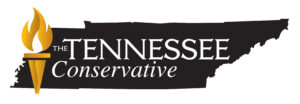46 Million Americans Can’t Afford Healthcare, Majority Of Hospitals Do Not Provide Pricing Transparency
Recent Polls Find 18% Of The Country Would Be Unable To Pay For Health Care If They Needed It And The Majority Of Hospitals In The U.S. Have Yet To Comply With A Transparency Ruling That Would Help Patients Shop Around For The Most Affordable Prices.
Photo Credit: Hloom via Flickr / CC
Published April 2, 2021
By Bethany Blankley [The Center Square contributor] –
An estimated 46 million people — or 18% of the country — would be unable to pay for health care if they needed it today, a recent poll conducted by Gallup and West Health found.
In another survey by the Texas Public Policy Foundation, the majority of hospitals in the U.S. have yet to comply with a transparency ruling implemented this year that would help patients shop around for the most affordable prices.
Gallup’s findings are based on a poll conducted between February 15 and 21 among 3,753 adults with a margin of error of 2%.
Gallup found that 35% of low-income earners were unable to pay for health care within the last 12 months. Among those polled, 12% had to cut back on buying food in order to pay for health care. The poll also found that broad support exists for capping out-of-pocket costs in Medicare.
The majority who could not afford to pay for health care were non-white adults between the ages of 18 and 49, and between the ages of 50 and 64.
“The practical ramifications of widespread reductions in basic household spending to offset the cost of care are considerable and should not come with great surprise given the substantial number of Americans who suffer its effects,” Gallup said of the findings. “Dovetailing with these realities is majority support for a number of public policies currently being considered, underscoring a public that continues to remain open to government action designed to provide relief from healthcare expenses.”
While 18% of respondents said they would be unable to pay for quality care if they needed it today, the same percentage also reported that someone in their household had already foregone care that they needed in the last 12 months because it was too expensive.
“The chances of any given household suffering from this form of healthcare insecurity are inversely related to annual household income, with 35 percent of respondents from low-income households—those earning under $24,000 per year—reporting forgoing care in the prior 12 months,” Gallup reports.
According to Texas Comptroller’s Office, Texas has the highest estimated number of uninsured people in the U.S.
David Balat, who leads health care policy initiatives at the Texas Public Policy Foundation, explained that while the comptroller’s numbers “don’t account for those who get their care from insurance alternatives, such as medical cost-sharing organizations, these estimates are shocking.”
While Americans can’t afford health care, a new price transparency rule that went into effect this year should help Americans find the least expensive options, Balat argues.
On January 1, 2021, a new Federal Price Transparency Rule went into effect, requiring hospitals to make public standard charges for items and services. The catch is that only 2,000 hospitals nationwide have complied, 4,000 have not. And many hospitals tried to prevent the transparency rule from being implemented, according to numerous reports.
“Given entrenched secrecy in pricing benefits hospitals and insurers, this scattershot approach to implementing reform is no surprise,” Balat added.
To help patients nationwide, the Texas Public Policy Foundation created a Price Transparency Compliance Index to objectively compare state compliance.
Less than half of Texas hospitals (46%) have followed the federal law to date.
The top five states in which the majority of hospitals have complied are Maryland (87%), South Dakota (80%), Minnesota (78%), Vermont (75%), and Michigan (74%).
The worst states, whose hospitals have barely complied are Maine (8%), Missouri (15%), Mississippi (17%), Nebraska (19%), and Alaska (21%).
Roughly 90% of those surveyed in multiple polls conducted by Harvard Harris polls answered “yes” to wanting more transparency.
A recent RAND study found that average hospital prices are 250% more than the Medicare rate for the same service at the same location.
Exorbitantly high prices, and not knowing the cost of procedures until after receiving the bill, has resulted in roughly one-third of Americans reporting medical debt. More than one in six have medical debt in collections, the Urban Institute reports.





